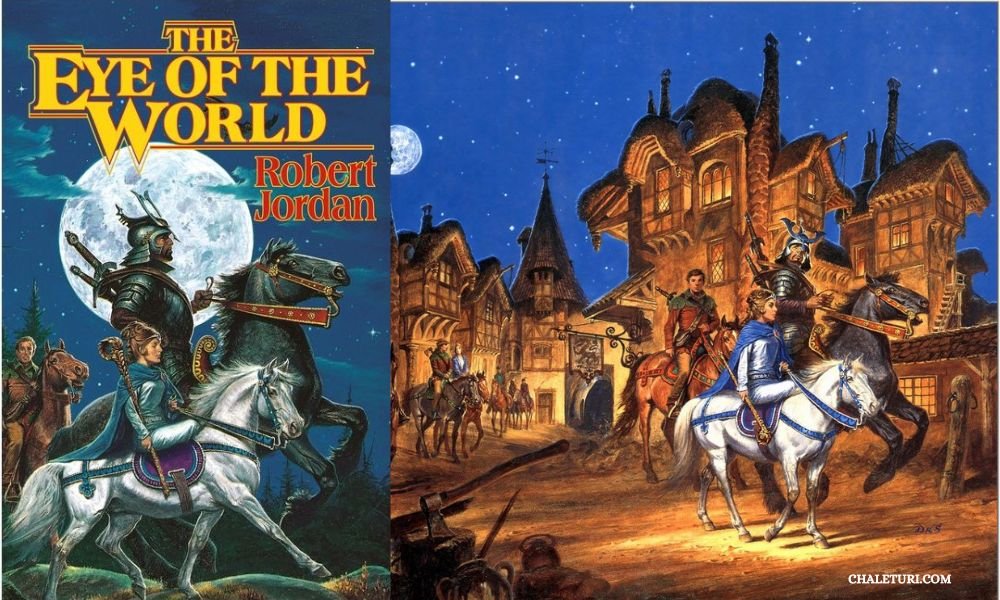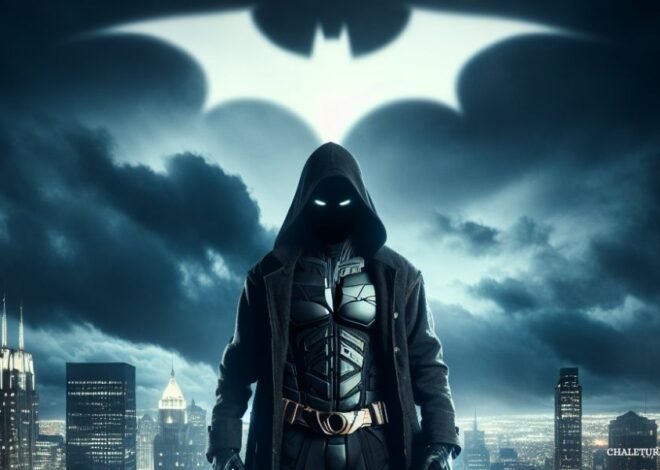In the context of telling fantasy stories, there are very few phrases that pique the imagination like any of these- “Whip Caress the Eye of the World.” Such befitting imagery provides a framework for a highly metaphorical and symbolically laden plot that seeks to take his readers to the core of the hero’s philosophy. The phrase itself evokes thoughts concerning power, perception and the journey of a hero. But wait, what can be this narrative about and how is it related to the story of a stunning hero lassatika?
The literary term ‘Whip Caress the eye of the world’ encompasses more than one plot; it represents a unifying theme that resonates with the struggles and evolution of heroes in different plots. It suggests the twofold greatness of power and wisdom, constituents in the making of any hero. It is upon this view that the attention is turned to explain how these recurrent patterns occur in both olden and more recent tales told to people and remain with them.
Unraveling the Origins
Literary and Cultural Influences
The variety of sources which the phrase “whip caress the eye of the world” is derived from is much more extensive than it may appear at first sight. Such subjects are also common in the works of literature: power, sight and change. There are epics and fairy tales which have an adventurous man doing just that—either using or rising above such forces as are necessary in the drama to fulfill one’s purpose. This is seen from the works of Homer and his Odyssey and such movies as Lord of the rings by Tolkien, all have characters who have to have the insight and strength to lift forces standing against them.
A whip as well as the eye, are elements that can be also found in mythological storylines. The Greek myth of Prometheus illustrates this very clearly. Therein, it is the eye that enables Prometheus to disobey the very gods who in the end go ahead to punish him, with extreme actions, or the whip. In the same way, the myths from the North, especially those telling about Odin, describe how he sacrificed one of his eyes for knowledge. This has very much to do with visions, and what people can do with them.
Modern Interpretations
Although these topics have evolved, these stories continue to be told in the form of books, movies and other forms of media. It is the tradition in traditional culture to look at epic heroes, in modern literature these are: Harry Potter, Katniss Everdeen, who withstand various tests on willpower and understanding. These methods of storytelling and ancient things to grab the attention of people have not lost its grip on people.
The theme’s adaptability is further evidenced in its representation in other media. The implementation of the image of the whip and the eye in visual arts and theater has been transferred into powerful performance arts, while music and video game culture incorporate visual symbols and images to retain their attractiveness and utility to a new generation of consumers.
Delving into Symbolism
The Whip as a Symbol
In an abstract world of representations, the whip emerges as the symbol of control and superiority. It is brought to our attention that the characters that hold the whip are rulers and manipulators who have the power to reverse disorder. But the other side of the whip is that it can also inflict pain, both emotional and physical, as a tool for progression in the story.
This change is the key moment in the movements of the hero. The same way the whip can wound, that is the same way it can be used to build strength within the character, forcing them to come to terms with their weaknesses and change. In this case, the whip is an accessory in the transformation of the hero as it urges him or her in the direction of fulfillment.
The Eye as a Motif
This motif of the eye is a complex motif the main interest of which lies in the fact that it is associated with eyes together with vision. It connotes the understanding of an essential aspect which is the ability to discern fact from fallacy which is fundamental for a hero. Be it speaking against forgery or discovering one’s calling, this eye leads the central character on their journey.
Other than just the ability to see the future, the eye is portrayed as all-knowing and seeing ones’ destiny. In most stories if not all, it symbolizes destiny showing people things that are to come. For heroes, it becomes an instrument of direction, which aids them through the uncertainty of the path and helps them find their destinies.
Navigating the Hero’s Path
Journey and Challenges
In a heroic path, it is inevitable to encounter a number of challenges set to measure the bravery of the heroic character. This could range from confronting robust foes or even battling one’s self which in turn serves as a step towards self-realization. Not only do these leave the hero in a better place, they also help to unearth other latent aspects of the hero and their purpose.
Self factification through facing hardships is part and parcel of every heroic adventure. Usually facing the barrier rather than retreating is the better option for a hero. In this way, they grow. And it is this physically turbulent internal experience that turns a common person into a remarkably mythic person.
Allies and Adversaries
An evolution of every hero needs to include transformations attributed to the presence of these key figures who become mentors, famiI. No hero’s journey would be complete without mentors assisting, family standing by or enemies expecting. Tutorials offer help and wisdom and strategy tactics to the hero for them to embark on the mission. Friends provide encouragement and support where they recount the significance of contact. Alas, enemies provoke and tempt and force them to extremes.
And it can be said that these characters help in the formation of the hero’s character development, shaping and hardening their spirit. Even through these interactions, images and characteristics of other determining attributes abound as they assist in the growth of the hero helping them in achieving the ultimate goal.
Insights from Case Studies
Notable Heroes in Literature
It is quite instructive to analyze the developments of the heroic characters in the literature. Frodo Baggins, Katniss Everdeen and Harry Potter are examples who show both the hardships and the victories that go with being a hero. The key aspects of their journeys reveal essential milestones and bring out ethical and philosophical messages to the audience.
These cause aspirants to uplift themselves and be more, even when such aspirants are in the memories of their heroes in combat. In the process, it becomes clear that the life of becoming a hero is filled with challenging situations which would eventually be seen as the reason for the victories.
Real-life Parallels
However, more than just fiction, within reality, there are those who also perform this role in many physical aspects. People like Mahatma Gandhi and Harriet Tubman are historical people who in true sense followed the hero’s quest seeking to make a difference by overcoming challenges. Much like what every story tells, those are the heroes that possess impressive courage and vision and dour determination in the change of society or history.
Even today, people like Malala Yousafzai carry on this mould, speaking out and seeking to make a difference or contact other people. Their lives depict the hero’s journey that can be proved egresses from the world of fantasy to that of reality.
The Enduring Appeal of the Hero’s Journey
When one considers the myths and motifs looked at, one understands why the hero’s journey has never ceased to interest people. The triad of domination, knowledge, and change appeals to our very urge for becoming and evolving. “Whip Caress the Eye of the World” also explains to us the pain and the painstaking work a hero puts in during the fight and the big win.
In the end, these factors mentioned enhance one’s desire to inform others with good stories or what we call it ‘telling the story’. Be it in books, in fables or myths, or in the real world, every hero’s journey is a reminder of the hidden greatness within us all.
FAQs
Why did Moiraine take them to The Eye of the World?
Moiraine brought The Eye of the World because there was a need to collect some important relics and face the forces of the Dark One.
What did Rand do at The Eye of the World?
When Rand was inside The Eye of the World, he fought against the servants of the Dark One and discovered that he had powers that were yet untapped within him.
What happened at The Eye of the World in Wheel of Time?
Time after time The Eye of the World was central in the ongoing creation of the world the story ‘The Wheel of Time’ is focused on… and that is Rand’s acceptance of the fact that he is the Dragon Reborn.
What is Eye of the World about?
The Eye of the World is a high fantasy rewritten by Robert Jordan that tells the story and action of a young man named Rand al’Thor who is caught in the good versus evil battle.
What happened to Rand at the end of the Eye of the World?
By the end of “The Eye of the World,” Rand manages to repel attacks from the Dark One’s forces which implies his preparation to become a more important character in the future developments.
Who is the bad guy in the Eye of the World?
The main villain in the story “The Eye of the World” is the Dark One, the evil that wishes to escape and change the world, and is fought against by Rand and his allies.




